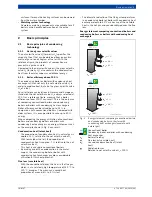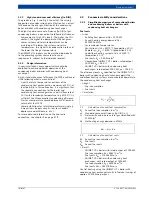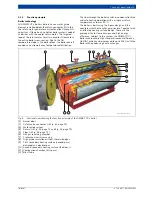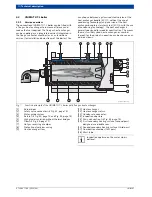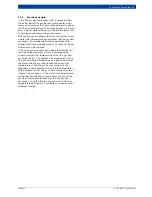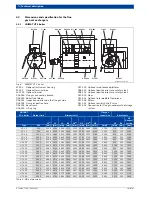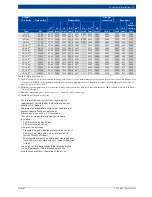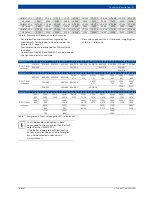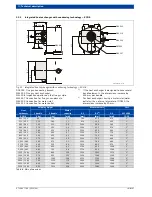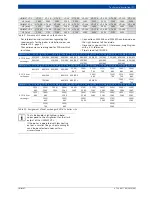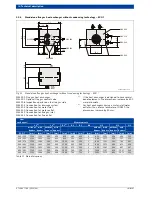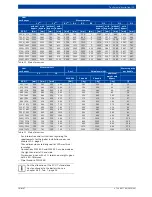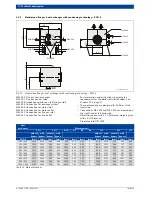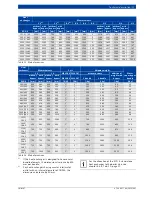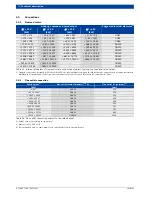
Basic principles
|
7
6 720 807 794 (2013/04)
UNIMAT
2.2.2
High standard seasonal efficiency [to DIN]
The graphs in Fig. 4 and Fig. 5 show that the varying
proportion of condensation heat utilisation has a direct
influence on the energy utilisation of the condensing
boiler or boiler with condensing heat exchanger.
The high standard seasonal efficiency [to DIN] of gas
condensing boilers is based on the following influences:
• Achievement of high CO
2
levels. The higher the CO
2
content, the higher the dew point of the hot gases.
• Lower system and return temperatures can be
maintained. The lower the system and return
temperatures, the higher the condensation rate and
the lower the flue gas temperature.
The UNIMAT UT-L boilers can be matched individually
to the prevailing system characteristics and
requirements, subject to the individual project.
2.2.3
Design information
In new installations, every opportunity should be
exploited to achieve optimum operation of the
condensing boiler or boiler with condensing heat
exchanger.
A high standard seasonal efficiency [to DIN] is achieved
if the following criteria are satisfied:
• Limit the return temperature upstream of the
condensing heat exchanger to a maximum of 50 °C, at
least partially. In this connection, it is significant that
the separate connections for the boiler and
condensing heat exchanger mean a partial flow rate of
20 % with a low design temperature (e.g. 40/30 °C) is
sufficient to achieve excellent condensing efficiency.
• Aim for a temperature spread between the flow and
return of at least 20 K.
• Avoid installations for return temperature raising (e.g.
4-way mixers, bypass circuits, low loss headers,
depressurised distributors, etc.).
For more detailed information on the hydraulic
connection, see chapter 9 on page 47 ff.
2.3
Economic viability considerations
2.3.1
Simplified comparison of conventional boilers
and condensing boilers or boilers with
condensing heat exchangers
Fuel costs
• Given
– Building heat demand
Q
N
= 2000 kW
– Annual heating energy demand
Q
A
=
3400000 kWh/a
– System design temperatures:
Ventilation
ϑ
V
/
ϑ
R
= 90/70 °C (proportion 20 %)
Radiators
ϑ
V
/
ϑ
R
= 75/60 °C (proportion 50 %)
Underfloor heating system
ϑ
V
/
ϑ
R
= 40/30 °C
(proportion 30 %)
– Fuel costs K
B
= 0.50 Euro/m
3
– Conventional UNIMAT UT-L boiler, rated output
2000 kW,
η
N
= 94,9 %
– UNIMAT UT-L boiler with condensing heat
exchanger, rated output 2000 kW,
η
N
= 102,3 %
The efficiency levels
η
N
specified for the UNIMAT UT-L
boiler with condensing heat exchanger apply if the
underfloor heating systems are connected separately to
the condensing heat exchanger.
• Sought
– Fuel consumption
– Fuel costs
• Calculation
F. 1
Calculation of annual fuel consumption
B
V
Annual fuel consumption in m
3
/a
η
N
Standard seasonal efficiency [to DIN] in %
H
i
Net calorific value; here natural gas simplified with
10 kWh/m
3
Q
A
Net heating energy demand in kWh/a
F. 2
Calculation of annual fuel costs
B
V
Annual fuel consumption in m
3
/a
K
B
Fuel costs
K
Ba
Annual fuel costs
• Result
– UNIMAT UT-L boiler with rated output of 2000 kW:
Fuel consumption B
V
= 358272 m
3
/a,
Fuel costs K
Ba
= 179136 Euro/a
– UNIMAT UT-L boiler with condensing heat
exchanger, with rated output of 2000 kW:
Fuel consumption B
V
= 332356 m
3
/a,
Fuel costs K
Ba
= 166178 Euro/a
Central heating using the UNIMAT UT-L boiler with
condensing heat exchanger results in fuel cost savings of
approx. 11601 Euro per year.
B
V
Q
A
η
N
H
i
×
-----------------------
=
K
Ba
B
V
K
B
×
=





